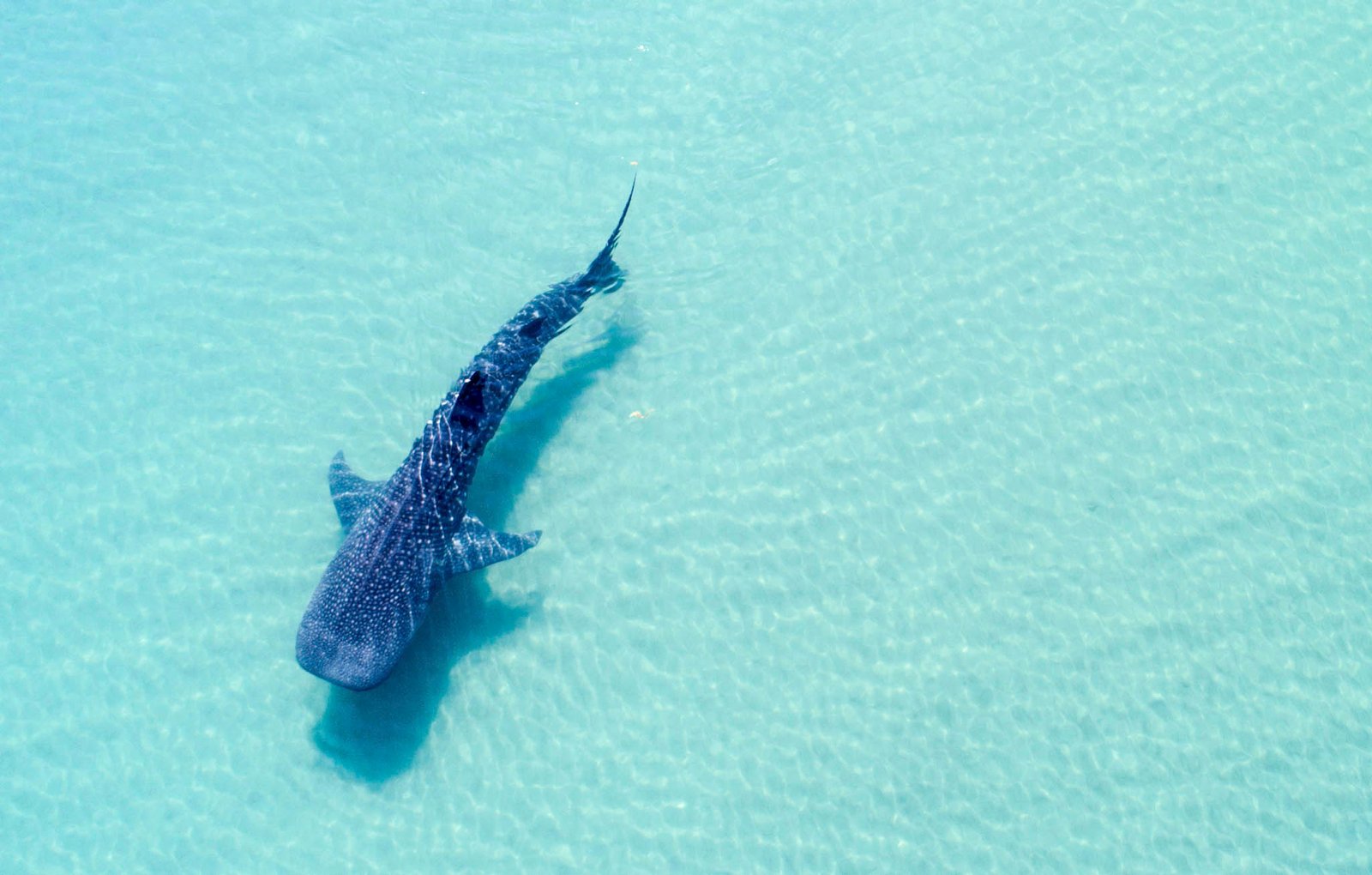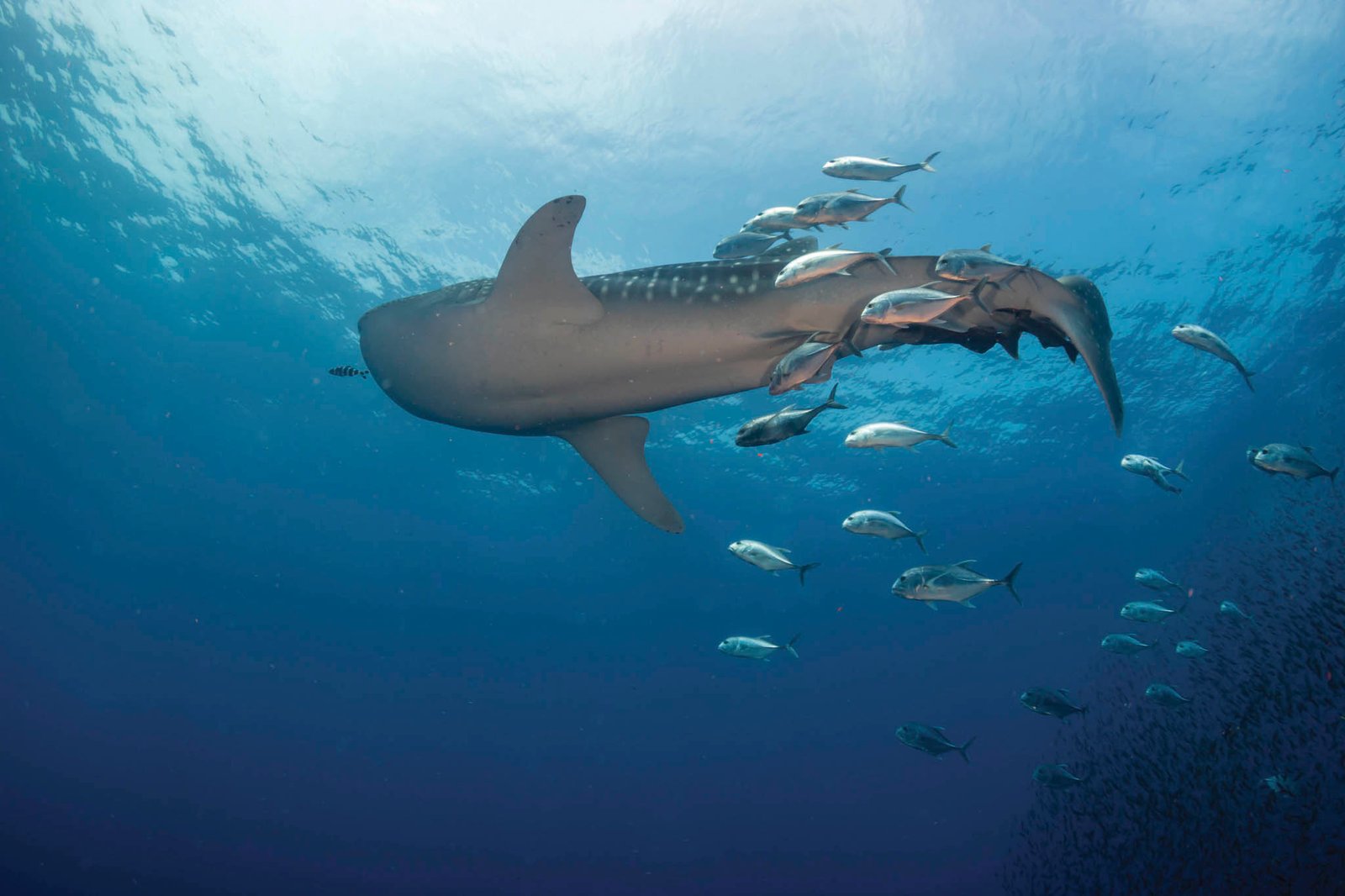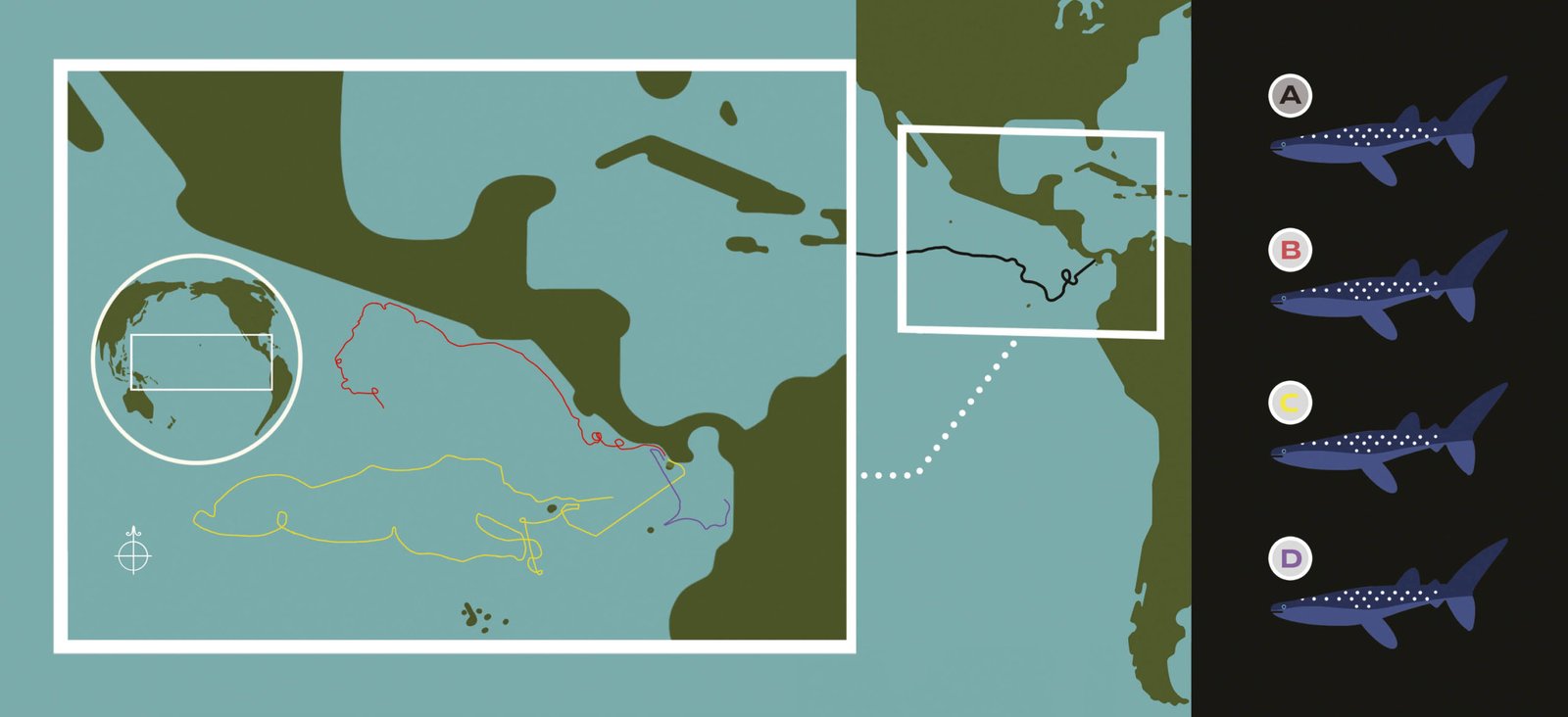
The Traveler of the Seas
Prior to the recent publication of a study based on data from satellite monitoring, little was known about the world´s largest fish.
By STRI y Javier A. Pinzón
Photos: Shutterstock


A. The Tireless Traveler
B. Northward

C. To the Open Sea
D. Southward
Shark No. 54749 was tagged on March 3, 2011, also in Coiba National Park. After five days, it moved on to the Gulf of Chiriquí National Marine Park, where the signal disappeared and then returned several months later, on December 6, on the edges of Panama and Colombia´s Exclusive Zone. During its 17-day stay in Colombia the shark visited the Malpelo Fauna and Flora Sanctuary, the Yuruparí-Malpelo National Management District, and the Encanto de los Manglares Management District in the Bajo Baudó municipality, where its signal dropped out.
This research was partially funded by Fundación Mar Viva (Panama), the International Community Foundation (CANDEO), the National Secretariat of Science, Technology, and Innovation of Panama (SENACYT) and its National Research System, and the Smithsonian Tropical Research Institute (STRI).
References:
Hector M. Guzman, Catalina G. Gomez, Alex Hearn and Scott A. Eckert (2018): Longest recorded trans-Pacific migration of a whale shark (Rhincodon typus). Marine Biodiversity Records, 11(1), 1-6.




Leave a Reply